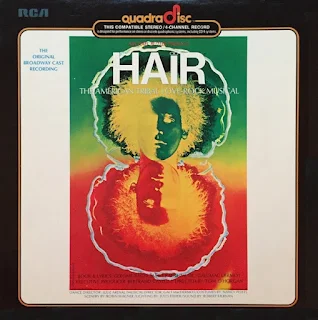The first American stereophonic discs were released by Audio Fidelity Records, in March, 1958. The four 33 & a third titles were..
In 1962, the Muntz Stereo-Pak 4-track CARtridge tape was introduced. It made the first car audio possible. This was followed by the stereo 8-track format, developed by a consortium of Ampex, Lear Jet and RCA Victor. In September 1965, the Ford Motor Company introduced the factory-installed 8-track player for autos. By 1968, 8-track had been established as the prerecorded taped music standard. 2 years later (in 1970) the 4-track format was discontinued.
The Stereo-Pak made the first practical car audio possible. The system used a continuous loop of tape that was enclosed in a plastic cartridge. The 4 tape tracks were played two at a time, with a tape head switching positions once. While playing, the tape head did not change programs automatically. This would have to be done manually (the 8-track format featured an automatic program-changing mechanism).
Image from https://www.discogs.com
In June 1969, recorded music advanced to four channels -or quadraphonic sound- with the first 4-channel, prerecorded open reel tapes. These were followed, in November 1970, by RCA's introduction of the quadraphonic 8-track -or Q-8- cartridge tape.
Another obsolete vestige of America's mid-century, the Quad-8 cartridge. These made their first appearance in late 1970. Unlike Stereo-8 format tapes, that had arrived on the scene 5 years earlier, Quad-8s only switched tracks once..instead of three times. Oh yes, the two formats were not compatible. If you played a Quad-8 on a Stereo-8 system, you would hear only half of the song at one time.
Image from RCA Records-http://www.8-track-shack.com
In 1971, the first matrix quadraphonic LPs appeared, utilizing the ABC-Sansui QS system. Columbia-Sony countered with SQ matrix LPs in 1972. These were followed by RCA-JVC's discrete quad format, known as CD-4 or Quadradisc. Unlike the Quad-8 tape format, all three Quadraphonic LP formats were stereo-compatible.
The Quad Revolution moved ever onward with the release of the first six 4-channel LP's, in March 1971. These Command Quadraphonic discs were produced by ABC Records. To hear a QS disc reproduced properly, one would have to own a Sansui system, with a QS Vario Matrix Decoder. Back in the day, Quadraphonic record albums could have been purchased at just about any Camelot Music, Record Bar or Sam Goody shopping mall store.
Image and logo from ABC Records and Sansui Electronics (see media fair use rationale at end of article)
The first Columbia-Sony SQ LPs were released in April 1972. Similar to the ABC-Sansui system, SQ Full Logic created the illusion of four separate sound tracks by "encoding" each of the two rear channels into the two in front. It worked pretty well. In fact, SQ quad recordings -such as Santana's "Abraxas" album, Pink Floyd's "Atom Heart Mother" album (a British import) and Edgar Winter's "Frankenstein" song- demonstrated some neat, moving-around-the-room effects.
Image and logo from Sony Music Entertainment and Sony Electronics (see media fair use rationale at end of article)
In February 1973, JVC-RCA's CD-4 or Quadradisc LP format made its debut. CD-4 used an ultrasonic "carrier wave," which instructed a CD-4 Demodulator to divide the audio into four separate sound channels.
Image and logo from RCA Records and JVC Electronics (see media fair use rationale at end of article)
To convert from stereo to quad, one would need to either scrap everything and buy an entirely new sound system or else acquire an additional stereo amp, two more speakers and the appropriate decoder(s). For CD-4, one would also have to have the CD-4 demodulator, a new turntable and phono cartridge that could accommodate the additional frequency range of the carrier wave.
The sonic separation of CD-4 LPs was superior to that of the two matrix systems...however, there was also a great deal of distortion with the CD-4 system that was not present when playing QS or SQ matrix quadraphonic LPs.
The three competing -and totally non-compatible- systems vied for prominence through the remainder of the 1970s, with none emerging victorious. Quad sound was gone and nearly forgotten by the advent of the digital compact disc, in 1983.
















